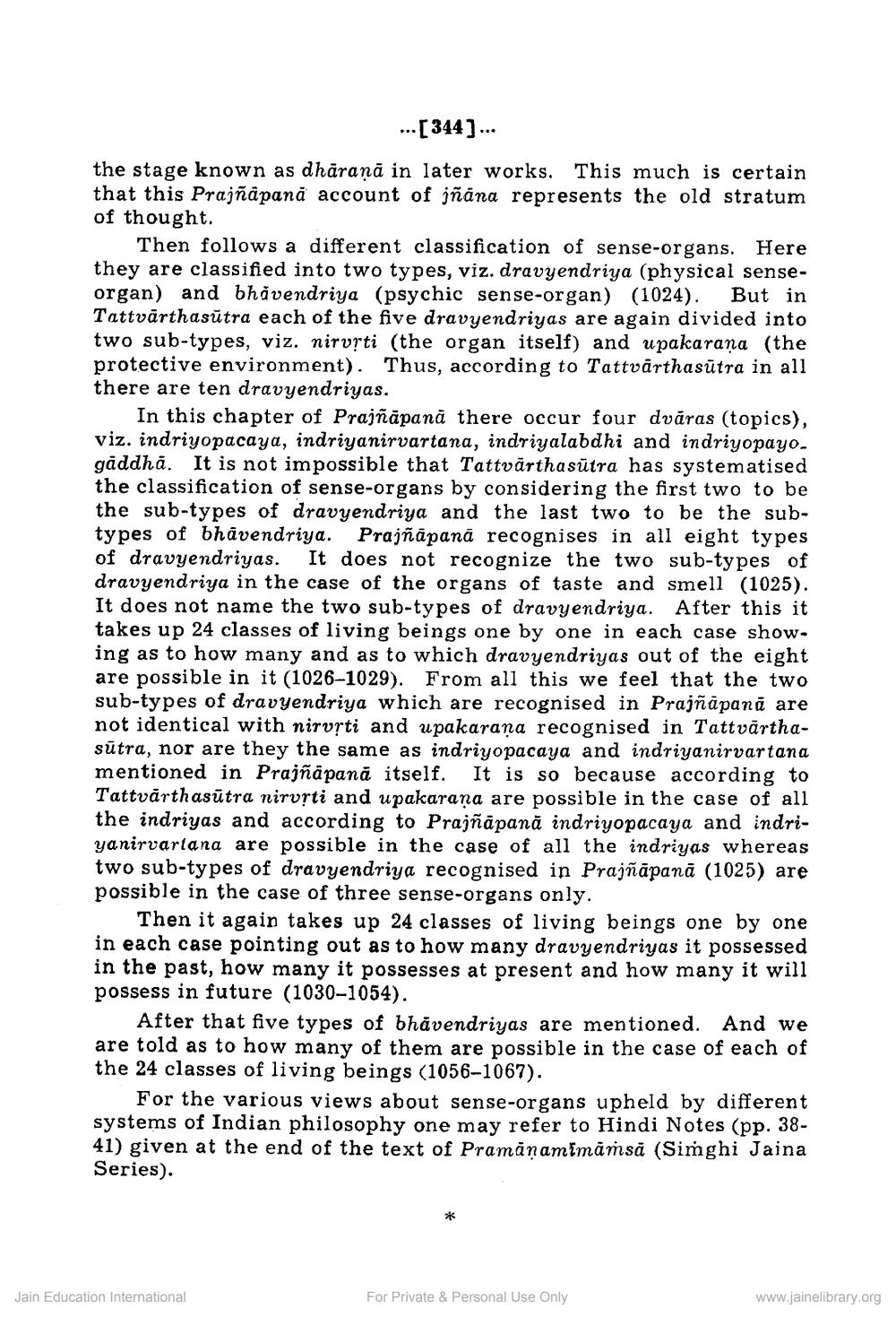________________
...[344] ...
the stage known as dhārană in later works. This much is certain that this Prajñapana account of jñana represents the old stratum of thought.
Then follows a different classification of sense-organs. Here they are classified into two types, viz. dravyendriya (physical senseorgan) and bhåvendriya (psychic sense-organ) (1024). But in Tattvārthasūtra each of the five dravyendriyas are again divided into two sub-types, viz. nirvști (the organ itself) and upakarana (the protective environment). Thus, according to Tattvärthasūtra in all there are ten dravyendriyas.
In this chapter of Prajñāpanā there occur four dvāras (topics), viz. indriyopacaya, indriyanirvartana, indriyalabdhi and indriyopayo. gaddha. It is not impossible that Tattvärthasūtra has systematised the classification of sense-organs by considering the first two to be the sub-types of dravyendriya and the last two to be the subtypes of bhāvendriya. Prajñāpanā recognises in all eight types of dravyendriyas. It does not recognize the two sub-types of dravyendriya in the case of the organs of taste and smell (1025). It does not name the two sub-types of dravyendriya. After this it takes up 24 classes of living beings one by one in each case show. ing as to how many and as to which dravyendriyas out of the eight are possible in it (1026-1029). From all this we feel that the two sub-types of dravyendriya which are recognised in Prajñāpanā are not identical with nirvști and upakarana recognised in Tattvārthasūtra, nor are they the same as indriyopacaya and indriyanirvartana mentioned in Prajñāpanā itself. It is so because according to Tattvārthasūtra nirvști and upakarana are possible in the case of all the indriyas and according to Prajñāpană indriyopacaya and indriyanirvartana are possible in the case of all the indriyas whereas two sub-types of dravyendriya recognised in Prajñāpanā (1025) are possible in the case of three sense-organs only.
Then it again takes up 24 classes of living beings one by one in each case pointing out as to how many dravyendriyas it possessed in the past, how many it possesses at present and how many it will possess in future (1030-1054).
After that five types of bhāvendriyas are mentioned. And we are told as to how many of them are possible in the case of each of the 24 classes of living beings (1056-1067).
For the various views about sense-organs upheld by different systems of Indian philosophy one may refer to Hindi Notes (pp. 3841) given at the end of the text of Pramānamimāṁsă (Simghi Jaina Series).
Jain Education International
For Private & Personal Use Only
www.jainelibrary.org




